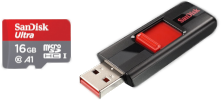Error Mounting - Unknown Filesystem Type Exfat

If you are seeing the message “Error Mounting - Unknown Filesystem Type Exfat” you are probably trying to mount an SD card or USB drive. The error means that you don’t have the needed packages to to mount an exfat filesystem. The solution is to just install the packages. It takes about a minute.
To install the needed packages so that you can mount exfat formatted disks on Ubuntu, just run this command:
sudo apt install exfat-fuse exfat-utils
On Fedora you can use either of the following two commands depending on what version you are using:
Newer:
sudo dnf -y install exfat-utils fuse-exfat
Older:
wget https://download1.rpmfusion.org/free/fedora/rpmfusion-free-release-28.noarch.rpm
sudo yum install rpmfusion-free-release-28.noarch.rpm
sudo yum install fuse-exfat
Here we show you how to mount an exfat filesystem on Ubuntu Linux:
Actually Mounting An Exfat Filesystem
Once you have the correct packages / utilities installed you can mount an exfat filesystem. You would use a command like the following:
sudo mount -t exfat /dev/sdc1 /mnt/my-disk/
You could also use the disk tool that we used in the video. Either way works fine.
What is exFAT?
exFAT is a file system that is typically found on SD cards and USB flash drives. It has been optimized for flash memory like these. For SDXC cards over 32 GB it is the default filesystem. It supports larger files than FAT32 but has less overhead than NTFS.
- Supported by many newer versions of systems (Windows, OSX, Linux, Cameras, etc.)
- 16 exbibyte file size limit
- great for SD cards, USB drives, and cameras
- easy to implement in firmware ( like on cameras )

It is supported by a large number of systems and devices. Many cameras and other devices use it. If you are switching between multiple operating systems this is probably the best choice.
exFAT vs FAT32

FAT32 doesn’t support files larger than 4 GB. Otherwise it isn’t a terrible choice for an SD card or USB drives as it is supported by a wide number of systems.
FAT32:
- 4GB file size limit
- Common on SD cards under 32 GB
- Old and widely used
- Based on the older fat16
exFAT vs NTFS

NTFS is currently read only on OSX. Linux has had suboptimal NTFS support in the past but should be OK now. As far as I know NTFS has been pretty stable on Linux for years now. That said, I haven’t used NTFS on Linux in years and I tend to shy away from it.
NTFS:
- Read only on OSX (by default)
- I still don’t trust it on Linux
- More features than exFAT
- More reliable, has journaling
- Harder to implement in firmware ( like on cameras )
Others
There are many other filesystems out there but most of them are not great candidates for cross platform usage.
One potential option is ext4. This is the default filesystem on many Linux distros these days. While you can technically get ext4 to work on both Windows and OSX it will probably end up taking you more effort than it is worth and you could still run into issues. I wouldn’t trust it to be stable or reliable on either Windows or OSX.
ZFS is also not a great option. It isn’t just for Linux, BSD, and Solaris. It is supported on OSX and even on Windows these days (as crazy as that sounds). Cameras don’t tend to support it for obvious reasons. You don’t really want it on a USB drive or an SD card. You also don’t want to be moving it between systems all the time.
FAQ
- Which is better fat32 or exFAT? exFAT is better.
- Can I use exFAT instead of fat32? Yes, on most modern systems.
- Should I use exFAT? Yes, for SD cards and USB flash drives or anything that youw want to work on multiple different operating systems.
- Is exFAT a reliable format? Sort of. It doesn’t support journaling so it will be less reliable than NTFS or ext4. It is fine for what it does. Don’t use it for long term storage and don’t pull it out while it is being written to.
- Can Windows 10 read exFAT? Yes.
- Why is exFAT so slow? The storage format that it uses is slow. Also, it is meant for flash storage and could be slower on mechanical drives.
- Does exFAT have file size limit? Yes, 128 PiB.
- What are the limitations of exFAT?
- Max file size 128 PiB (theoretical 16 EiB–1)
- Max volume size 128 PiB, 512 TiB recommended
- Max filename length 255 characters
- Max number of files up to 2,796,202 per directory
- Is exFAT faster than NTFS? No, NTFS is generally faster.
References
